
views
Satisfying the Requirements for Adverse Possession

Occupy the property in a hostile manner. The first requirement for adverse possession is to occupy the piece of property in a “hostile” manner. The definition of “hostile” is considerably different depending on the state. In Maine, for example, the squatter must be aware that he or she is trespassing. However, in some other states like Connecticut, “hostile” is defined simply as occupation. In other words, these states do not require that you know the land belongs to someone else. Other states require that the trespass be unintentional or that the trespass be innocent and a good faith mistake as to ownership.

Possess the property physically. The second element is that you must actually physically possess the property and treat it as your own. For example, the person actually possessing the land must make use of the property, which may be shown by attempts to make improvements to the property.

Occupy in an open and notorious manner. The third element requires that you make your occupation of the land obvious to everyone. You cannot secretly hide out on someone’s property and then claim adverse possession. For example, you could make your presence known by erecting a fence, building an addition, or pouring concrete on the driveway.

Occupy the land continuously for a period of time. The fourth element requires the squatter to possess the property exclusively and continuously for a certain amount of time. This means that the squatter cannot share possession with the owner or with other strangers. In addition, the squatter cannot give up using the property for a period of time but then later return to it and claim title by adverse possession. The amount of time that occupation must be exclusive and continuous varies by state. In California, for example, a squatter must possess the land continuously for five years. In other states, like Alabama and Arizona, the time required for possession is 10 years. In addition, some states like Idaho and California require that the squatter pay property taxes during the statutory time period. Some states also require that the person claiming ownership through adverse possession have some kind of document or deed related to the ownership, even if the document is inaccurate or carries no legal weight.
Petitioning the Court for Quiet Title

Meet with an attorney. State requirements for adverse possession are strict. In order to make sure that you satisfy the requirements, you should meet with a lawyer. An experienced attorney can offer sound legal advice and also help you put together the strongest case possible. To find an attorney, visit your state’s bar association, which should run a referral service. If costs are a concern, realize that in many states attorneys can now offer “unbundled” legal services. This means that the lawyer can perform discrete tasks (such as drafting a motion or offering advice) for a fee. Instead of having a lawyer take over the entire representation, you can decrease your legal costs by finding a lawyer who is willing to perform any tasks you can’t handle yourself. Ask what kinds of arrangements the lawyer offers when you set up a consultation.

Perform a title search. To quiet title, you will need to sue anyone who has an ownership interest in the property. Accordingly, you need to know who these individuals may be. You should perform a title search. You can hire a title company to perform a title search. Title companies can be found in your Yellow Pages or online by typing “title company” and your city or county into a web browser. If you cannot find any owner, then you can still bring a quiet title action. Instead of naming individual defendants, you will sue “John Does,” who you will identify as anyone who has an interest in the property.

Locate the appropriate court. You will need to bring a quiet title action in the local court in the county where all or part of the land is located. You can find this court address by looking on the web or in a phone book.

Create a petition. The courthouse may have a printed “fill in the blank” form for quiet title actions. Ask the court clerk if one is available. If not, you will need to draft your own petition by following the steps below. An example of a blank form is here, from Pennsylvania.

Open a blank word processing document. You can begin to draft your own petition by opening your favorite word processing document. Set the font to a standard size and style (e.g., Times New Roman 12 point) and turn the line spacing to doubled-space.
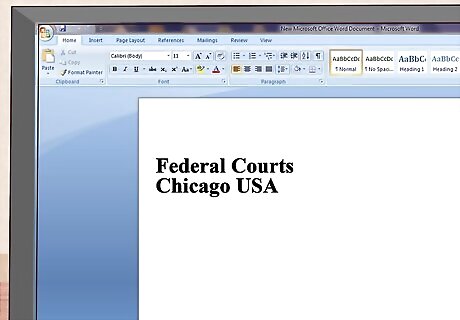
Insert a caption and title. At the top of the document is the caption. A caption lists the court’s name and location, as well as the parties and the case number. If you are bringing the petition, then you are the “Petitioner.” The record owner of the property is the “Respondent.” Use this example as a guide for how you should place the information: court name at the top, then the parties aligned on the left, with the case number at the right. You will get the case number when you file the petition. If you do not know who owns the land, then you would list “John Does 1-100, or any other person, known or unknown, with an interest in the property.” After you have entered the header information, then title the petition a couple lines beneath the caption. In bold letters, centered, title the motion “Action to Quiet Title” or “Complaint to Quiet Title.”
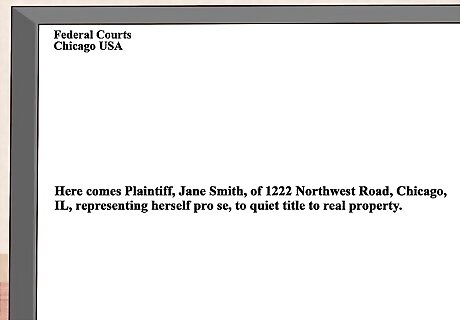
Draft the body of the petition. The body of the petition will include vital information about the dispute. Number your paragraphs. The body should include: Your name, address, and whether you are representing yourself pro se. If you have a lawyer, then include your lawyer’s name and address. Type: “Here comes Plaintiff, Jane Smith, of 1222 Northwest Road, Chicago, IL, representing herself pro se, to quiet title to real property…” The name and address of the Respondent (or record owner of the property). If you don’t know the owner, then name “any and all persons, known or unknown, who claim an interest in the property.” It is also a good idea to include this language even if you can identify the owner. Sample language may be: “…against the defendant, [insert name and address] and any and all persons, known or unknown, who claim an interest in the property.”
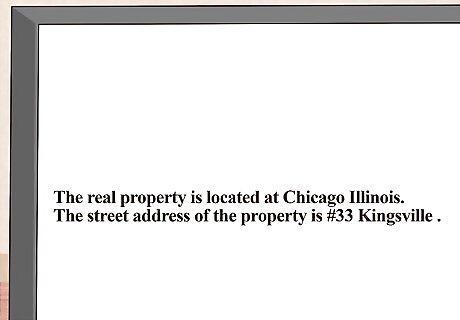
Identify the property. You should identify the property by both its legal description (found on the deed) and the street address or common designation. See wikiHow’s How to Get a Legal Description of Property for help in finding the legal description. Here is sample language: “The real property is located at [insert legal description]. The street address of the property is….”

Include the law and facts alleging each element of adverse possession. You need to identify the law that allows for adverse possession and then list facts that support your request: hostile possession, physical occupation, open and notorious, etc.
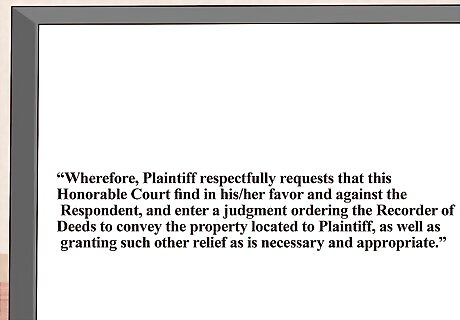
Add a conclusion. Always conclude the petition with a prayer for relief. Sample language might be: “Wherefore, Plaintiff respectfully requests that this Honorable Court find in his/her favor and against the Respondent, and enter a judgment ordering the Recorder of Deeds to convey the property located at [insert legal description] to Plaintiff, as well as granting such other relief as is necessary and appropriate.”
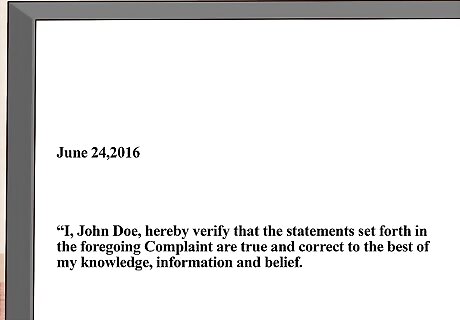
Insert a signature block. You must sign your motion. Also include a verification statement. Sample language might be: “I, [insert name], hereby verify that the statements set forth in the foregoing Complaint are true and correct to the best of my knowledge, information and belief.” Also include the date.

Add a notary block. You will probably need to have your petition notarized. You can find appropriate notary language for your state by searching the web. Type “acknowledgment” or “notary” along with your state. Only sign in front of a notary. There should be a notary in the courthouse. Alternately, many large banks have notaries. Be sure to bring sufficient personal identification with you when you meet with the notary. A valid driver’s license or passport should be sufficient.
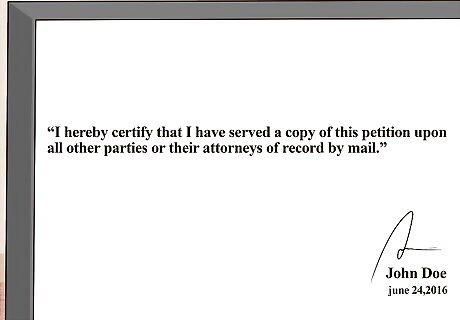
Attach a certificate of service. You need to state how service will be made on the record owner of the property. You can do this by typing the following at the very bottom of the petition: “I hereby certify that I have served a copy of this petition upon all other parties or their attorneys of record by [mail/personal service/other].” Then print and sign you name, including the date.
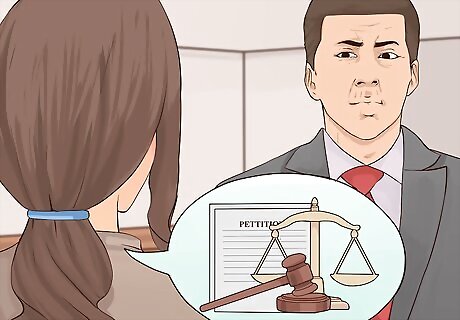
File the petition. Take the petition and any attachments (such as a copy of the deed) to the court clerk. Make several copies and have the clerk stamp all of your copies. One copy is for the Respondent and at least one copy is for your records. You will file the original. You will probably have to pay a filing fee. The fee amount will vary depending on state and county. If you cannot afford the fee, then ask for a fee waiver form and fill it out.
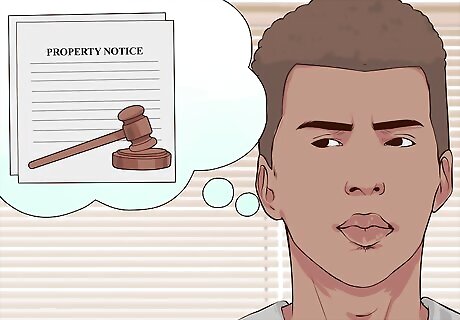
Serve notice on the record owner. You need to give the record owner of the property notice of the lawsuit. You do this by serving a copy of your complaint/petition as well as a summons. A summons is a legal form that notifies the Respondent of the lawsuit and tells him how much time he has to file a written answer. The clerk should print off the summons or give you a form to fill out. Generally, you can serve notice using the sheriff or a process server, if you know where the defendant lives. If you do not know the owner, then you will probably need to give notice by publication. Ask the clerk for the procedure. Notice by publication typically requires that you pay for an advertisement in a local newspaper. The advertisement has to run for several days.
Preparing for Your Trial
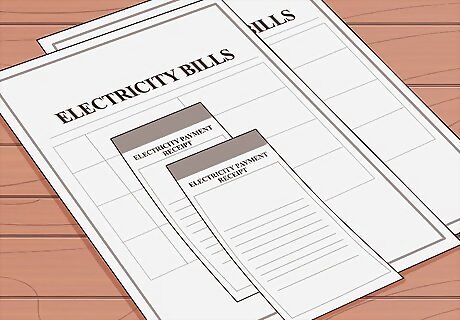
Gather evidence of physical possession. To show that you occupied the property, gather evidence of utility bills which show use of electricity, gas, or heating oil. Also gather proof of payment, to show that you were the one using and paying for the utilities. You can also have witnesses testify that you possessed the property. For example, if you used land adjacent to your property to store equipment, then other neighbors can testify that you were using the property.

Get proof that you occupied the property openly. Take pictures of any significant improvements that you made to the property, for example erecting a fence or barn, or laying a new driveway. Use before and after pictures to show the property before the improvement and then with the improvement.
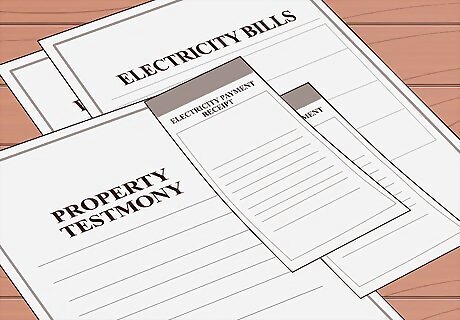
Show that you occupied the land continuously. You will need sufficient evidence to show that your physical possession was for the duration required by your state. You will use much the same evidence as you will use to show possession: testimony (including your own) utility records
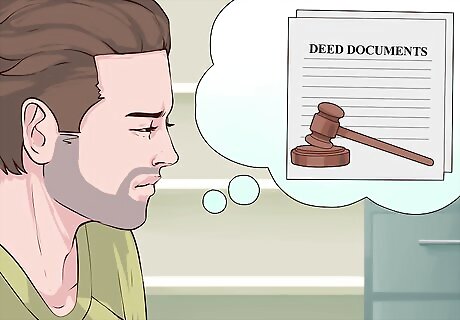
Obtain a copy of the deed. If you didn’t already get one before filing your lawsuit, you should get a copy of the deed. Make sure it is a certified copy. You also need a copy of whatever deed that you have. You may have been given a defective deed or a fraudulent one. Because a requirement in many states is that you acted under color of a deed, you will need proof of whatever deed you relied on. It may be different from the official one in the Recorder’s Office.
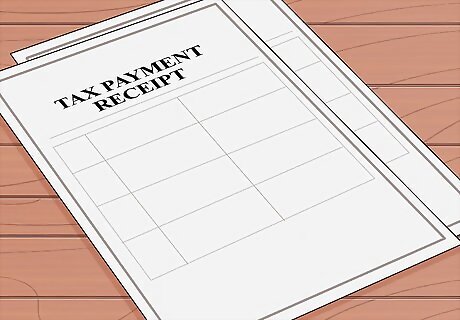
Gather proof that you paid taxes. Some states require that someone pay taxes before claiming land by adverse possession. Even if your state does not, your taxes could be some proof that your possession was open, especially where the property’s appraised value increases because of improvements. To get copies of your tax payments, contact the appropriate department, which is usually the county Treasurer or Assessor’s office.
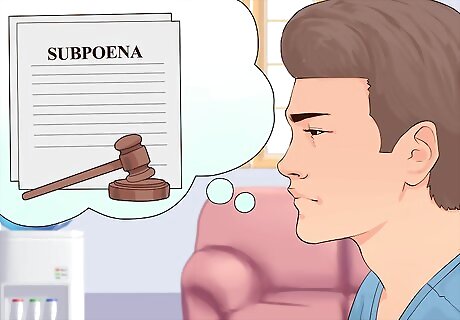
Subpoena witnesses, if necessary. If you need witnesses to testify at trial, then you should serve them with a subpoena. You should be able to get subpoena forms from the court clerk.
Attending Your Trial

Arrive early. You should give yourself plenty of time to get to the courthouse and find the courtroom where your trial will be held. You may also need to go through security. Budget an hour to find parking and get to the courtroom in time. If possible, leave your cellphone outside in the car. At the least, be sure it is turned off. Make sure to have consumed all food and beverages before entering the courtroom.
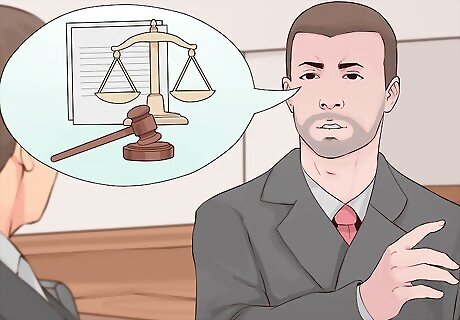
Deliver an opening statement. As the petitioner, you will go first. You should briefly lay out what you intend to prove. Think of the opening statement as a roadmap of your case. In many states, you probably cannot have a jury trial for a quiet title action, so you will be making your argument to the judge.

Present witnesses and evidence. If you have a lawyer, then he or she will call witnesses, including you. If you are proceeding without an attorney, then you will need to deliver your testimony to the judge in the form of a speech. You should prepare for this speech by writing down an outline of what points you want to make. Look at the elements you must prove: You should state when you first physically possessed the property and how you came to possess it. Did you buy a parcel of land and assume that the property in dispute was part of your deeded land? You should seek to admit into evidence anything that shows that your possession was open and notorious, as well as ongoing. You can use witness testimony, photographs or video, or utility bills to help establish these facts.

Cross examine witnesses. Once you have finished presenting your case, the Respondent will have an opportunity to present witnesses and evidence. You can ask questions in cross-examination.

Deliver a closing argument. In your closing argument, you should go through the requirements for adverse possession and remind the judge of what evidence you presented that proves each element. Also try to disprove any counterargument made by the Respondent. Use exhibits in the closing argument. If your proof consists of tax records, utility bills, and photographs, then you will want to use them in your closing argument. For example, you might say, “In 2011 I built this barn, which should have alerted everyone in the town to my open and notorious occupancy of the land. The barn is pictured here, in Exhibit 3.” Then hand the judge the exhibit.

Draft an order. The prevailing party usually has to draft an order, which memorializes the judge’s determination of the case. There should be blank order forms in the court room for you to fill out. Once it is filled out, you will have the other party look it over and then submit it to the clerk for the judge’s signature.
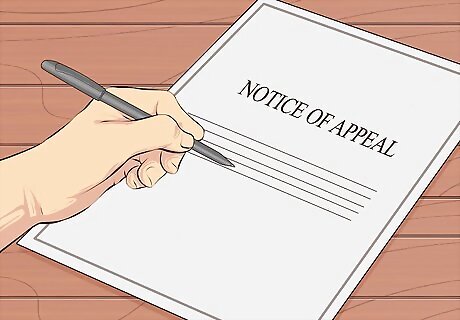
Appeal, if necessary. If you lost at trial and want to appeal, then you can ask the clerk for a Notice of Appeal form. You must fill it out and file it. The procedure for appeals varies by state, but generally you will have around 30 days to fill it out and file it with the trial court. Ask the clerk who you should file the form with. If you choose to appeal, then you should seek the assistance of a lawyer. Appeals are complicated and often very difficult to win. You should seek an attorney’s advice before undergoing an appeal.

















Comments
0 comment